
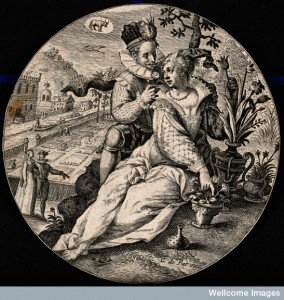 What would an early modern person do if they found themselves troubled by unwanted lascivious thoughts, take a cold shower perhaps? Well early modern men and women were very well aware that lust was malleable. In particular it could be manipulated through food. Desire could be sparked or increased by consuming a range of aphrodisiacs – including oysters, parsnips, spices and a range of animal genitalia. This was particularly useful for those people who wanted to improve their chances of conceiving a child, as most aphrodisiacs were acknowledged to improve fertility. Desire could also be dampened by avoiding certain foods, reducing overall food consumption or eating anaphrodisiacs.
What would an early modern person do if they found themselves troubled by unwanted lascivious thoughts, take a cold shower perhaps? Well early modern men and women were very well aware that lust was malleable. In particular it could be manipulated through food. Desire could be sparked or increased by consuming a range of aphrodisiacs – including oysters, parsnips, spices and a range of animal genitalia. This was particularly useful for those people who wanted to improve their chances of conceiving a child, as most aphrodisiacs were acknowledged to improve fertility. Desire could also be dampened by avoiding certain foods, reducing overall food consumption or eating anaphrodisiacs.
Nehemiah Wallington a seventeenth-century Puritan artisan recorded in his diary that he was disturbed by his lustful thoughts for a maid and so attempted to focus him mind on scriptural passages that condemned ‘adultery, fornication, uncleanness, [and] wantoness’. He also altered his diet and ‘abstain[ed] from divers meats as eggs and oysters and wine and many other things which I loved very well.’1 This was likely an exercise in self-control as well as removing foods from his diet that were known to heat the body and provide nourishment that created troublesome titillating seed. However, it also followed the maxim recited by Philip Barrough that ‘If you have not bread & wine: carnal lust wil coole & pine.’2
In addition to these measures Nehemiah could have followed the advice of several medical and botanical texts and consumed foods that made the body cold and moist, quenching the heat of desire, like lettuce and cucumbers. William Bullein’s Bulwarke of defence against all sicknesse described how lettuce dulled the body,
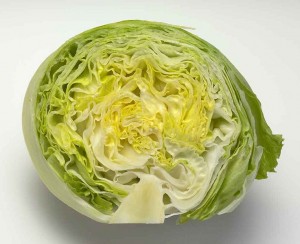
‘Lettice is an herbe cold and moyst and very comfortable for a hotte stomacke, bringeth slepe, mollifyeth the bellye, the dryer it be eaten the better it is. I meane, if it be not muche washed in water, addynge cleane Salet Oyle, Suger and vineger to it, it abateth carnal luste’.3
Depending upon his age at the rime of this particular episode Nehemiah could have followed Bullein’s advice that angelica was particularly good for those caught in the throes of youthful desire: ‘It hath one vertue, excellent for young lusty, single People, to quench carnall rage, or youthful lust’.4
Even more renowned for their subduing effects on the body were camphor and agnus castus. Theophile Bonet opened his discussion of impotence with the observation that camphor cooled the body and when applied to the testicles removed all ‘Venereal provocations.’5
John Tanner explained that syrup of agnus castus was made to ‘prevent immoderate Letchery, and nocturnall pollutions; for without doubt it dryeth and cooleth the naturall seed, thereby restraining venereall thoughts’, although he was careful to explain that ‘for my part I can say nothing of it by experience’.6
John Gerard’s Herball similarly recorded that ‘Agnus Castus is a singular medicine and remedie for such as would willingly liue chaste, for it withstandeth all vncleannesse, or desire to the flesh, consuming and drying vp the seed of generati|on, in what sort soeuer it be taken, whether in pouder onely, or the decoction drunke, or whether the leaues be carried about the body; for which cause it was called Castus; that is to say, chaste, cleane, and pure.’7
Camphor because of these particular properties was also associated with the clergy, who, it was suggested, needed some extra help in maintaining their vows of celibacy. Isbrand van Diemerbroeck recorded that he was employed to cure a man’s impotence and infertility following the use of camphor plasters to treat an ulcer in the thigh. As a part of this description he noted that some monks had inadvertently damaged the libido of a carpenter who came to work on their monastery:
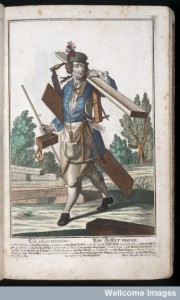
Credit: Wellcome Library, London.
‘Now because of these extraordinary Vertues in Camphire, certain Monks in Germany, who were more desirous, then usual, to live a chast Life, hang it up in the Barrel to steep in Ale, which they usually drink, on purpose to suppress their carnal desires, and to avoid the Temptations of Venus. This occasioned a very pretty Story at Nimeghen of a Carpenter, who being hired to mend the Floor in a certain Monastry in the Territory of Cleves, in Lent-time, when the Monks chiefly Camphire their Ale, and being forced to stay there till he had finished, for three or four Months, drank of their Ale all the time. But when he came home to his Wife, never was a Guest more unwelcome in this World. For not having the least inclination to Venery he was forced to leave his Farm untilled; which impediment was afterwards however removed in a short time by the use of hot things. Nevertheless the Carpenter hated that Monastry ever after, and never would work there any more.’8
Consuming cold and wet foods that dampened the heat of desire was then one way of regulating concupiscence and avoiding sin. Moderating the diet was helpful in a range of situations, from helping monks maintain their celibacy to preventing a young man from becoming too infatuated with an attractive young woman.
__________
1. Paul S. Seaver, Wallington’s World: A Puritan Artisan in Seventeenth-Century London (Stanford, 1985), pp. 26-27.
2. Philip Barrough, The Methode of Physicke (London, 1583), p. 158.
3. William Bullein, Bulleins Bulwarks of defence against all sicknesse (London, 1579), p. 10.
4. Bullein, Bulleins Bulwarks of defence against all sicknesse, p. 43.
5. Theophile Bonet, Mercurius compitalitius , p. 545.
6. John Tanner, The hidden treasures of the art of physick (London, 1659), p.166.
7. John Gerard, The herball or Generall historie of plantes (London, 1633), p. 1388
8. Isbrand van Diemerbroeck, The anatomy of human bodies, comprehending the most modern discoveries and curiosities in that art to which is added a particular treatise of the small-pox & measles … (London, 1694), pp. 79-80.
© All rights reserved.

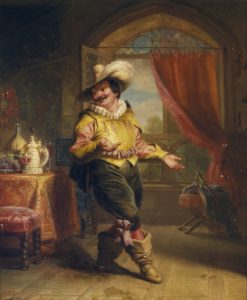

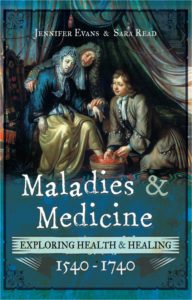
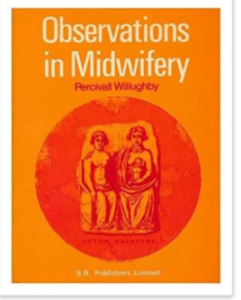
4 thoughts on “Dampening Desire”
Comments are closed.